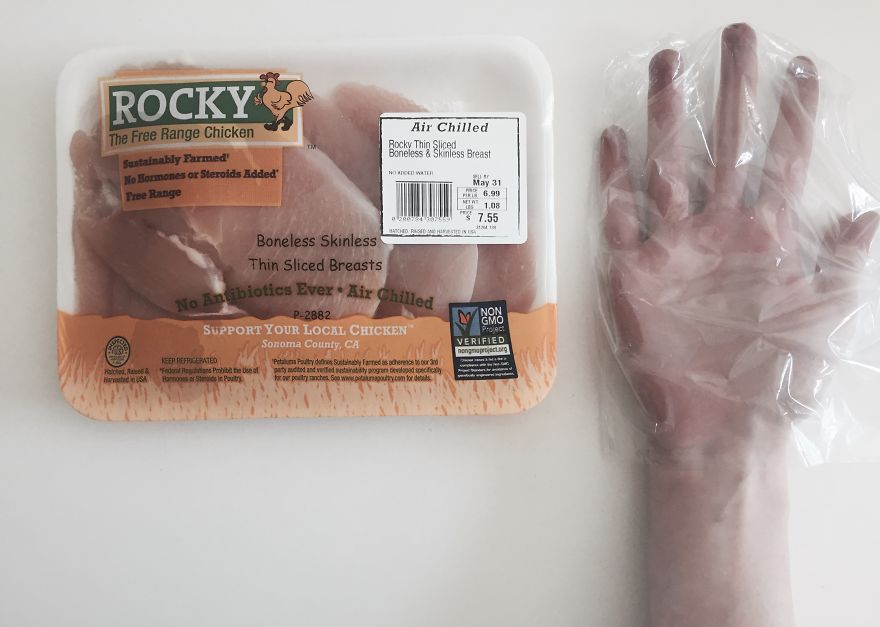I made this collage to encourage people to think about how their values relate to their actions, especially in the intersection of animal rights and food choices.
Grocery stores are made of overwhelming textures and colors and choices. It’s an exhausting place for moral consideration, especially when you don’t know what your choices are made of. Other people’s hands packing other animals organs into plastic to be shipped and loaded or thawed and eaten or thrown in the trash? As you view this, I’d like you to keep in mind your own choices and what they are made of. Here’s a visual reminder of how issues of environmental, human, and animal rights are inextricably connected and why you should eat less meat if you care about social issues.
“As long as there are slaughterhouses…” *featuring Chuck Close and Nike of Samothrace
Conclusion
Most people are guilty of compartmentalizing different aspects of their identity/lives in order to be more efficient, but this process can compromise morality and lead to a gap between values and actions. Historically, inconsistent values/actions and a lack of imagination regarding the future have led to cruelty and exploitation of many different names but the same shared shape.
Industrial farming is an example of a cruelty that results from this kind of compartmentalization and prioritization of efficiency. Leo Tolstoy famously said “As long as there are slaughterhouses, there will be war.” Similarly, the way we treat animals reflects the way we relate to other people and the world, and is connected to many other relevant social issues.
Overall, because people are so removed from agricultural processes, it can be difficult to feel what’s ‘right’ while making food choices. If you care about social issues and having consistent values/actions, you should consider cutting down on your meat consumption and buying ethically farmed livestock if you can afford it. Small lifestyle changes like these, while they don’t sacrifice much, can lead to big changes and a more ethical, consistent and sustainable world.
679views
Share on FacebookI truly understand what the article is saying. My mate and I garden hard. For a large majority of the year we pay for no veggies from grocery stores. But there is still death. We must get rid of the rats and gophers that threaten our crops. We try very hard to use natural methods but that, to our dismay, does not always work. Not eating meat doesnt enure that death is not present, and I hope that people do realize this.
This is a good point. Obviously this is a complex issue* and there is no perfect solution; However, some options may be better/more ethical than others. You might try cayenne pepper to get rid of rats and gophers. Alternatively, you could eat the rats and gophers (!) to make their deaths less wasteful.
Load More Replies...I like all the different elements of the piece; my eye continuously moves around the artwork. What is the significance/meaning behind the coin?
I truly understand what the article is saying. My mate and I garden hard. For a large majority of the year we pay for no veggies from grocery stores. But there is still death. We must get rid of the rats and gophers that threaten our crops. We try very hard to use natural methods but that, to our dismay, does not always work. Not eating meat doesnt enure that death is not present, and I hope that people do realize this.
This is a good point. Obviously this is a complex issue* and there is no perfect solution; However, some options may be better/more ethical than others. You might try cayenne pepper to get rid of rats and gophers. Alternatively, you could eat the rats and gophers (!) to make their deaths less wasteful.
Load More Replies...I like all the different elements of the piece; my eye continuously moves around the artwork. What is the significance/meaning behind the coin?

 Dark Mode
Dark Mode 

 No fees, cancel anytime
No fees, cancel anytime 

























































12
9